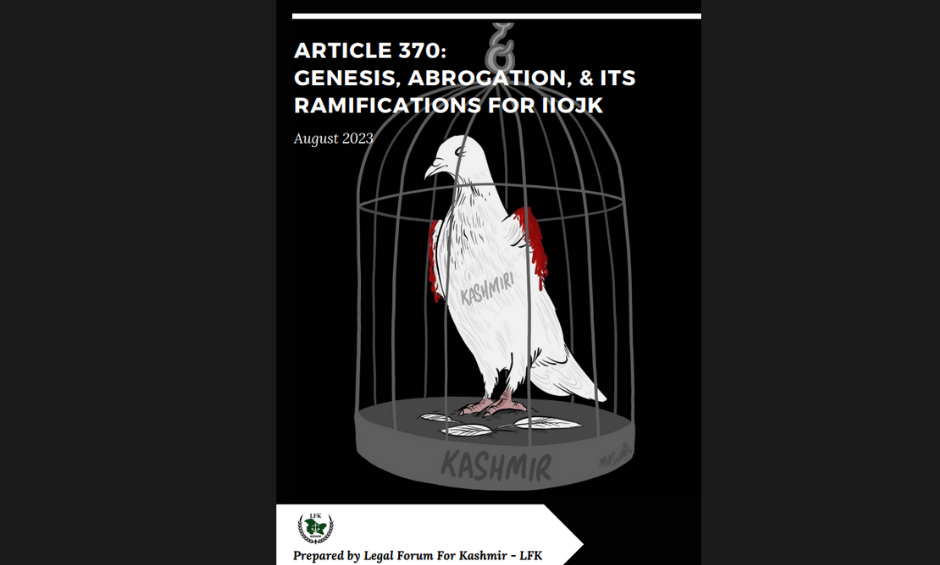On August 5, 2019, India revoked the semiautonomous status of the Indian Occupied Jammu and Kashmir thereby downgrading the erstwhile state into two centrally governed union territories – Jammu and Kashmir, and Ladakh. The illegal annexation of the UN-recognized disputed territory was accompanied by massive human rights violations with India jailing and torturing thousands of people including political leaders across the region. The months-long internet shutdown turned the region into an information blackhole as India, in addition to its one million occupying armed forces, deployed thousands of more troops in an effort to quell protests against the move.
This report discerns the important aspects of the reading down of Article 370 and 35-A, highlighting the nuances of this article in a systematic manner. Giving a brief introduction of foreign rules on Jammu and Kashmir, it gives a detail of the alleged accession of the erstwhile princely state with the Indian Union and how Article 370 became part of the constitution of India, and under which circumstances was the text draft of Article 370 tempered, leading to its ineffectiveness. Besides delving into the different rulings of the Supreme Court of India, this report underlines the Presidential Orders and the erosion of Article 370 and addresses the question of whether this Article could be abrogated or not. Moreover, this report highlights the impact of the abrogation of Article 370 which defined the residents of Jammu and Kashmir. Importantly, this report demystifies the much-touted notion of Article 370 being “temporary” in nature, shedding light on the historical context and how it evolved over time.






